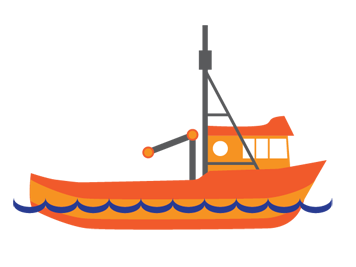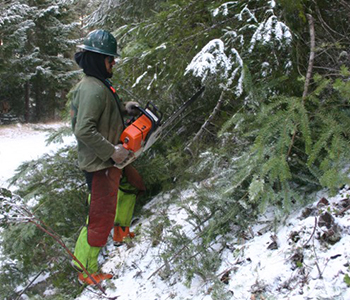Injuries
Evaluation of Wearable-Based Activity Recognition Modeling Applications for Logging Safety
This pilot project is integrating geospatial technology and activity recognition modeling into a Garmin smartwatch and smartphone application for rigging crew workers in the logging industry. This application aims to prevent injuries by improving loggers’ situational awareness by providing real-time updates of their coworkers’ work activity status and location.
Fishing Safety
Commercial Fishing Safety

Forestry Services

Forestry services work occurs nationwide, yet is often hidden from the public eye.
Safety Surveillance for Pacific Northwest Commercial Fishing: Risk Information System for Commercial (RISC) Fishing
Injury and Illness Prevention for the Pacific NW Dairy Industry
Worker’s compensation claims data show dairy workers have a higher injury rate than workers in other industries. Industry specific risks include acute injuries from animal assaults, slips and falls on wet surfaces, and chronic injuries from repetitive stress. For many hired diary workers, Spanish is their primary language.
Project Overview
Injury and Illness Surveillance in the Pacific Northwest for the Dairy Industry
Spanish Glossary of Forestry Services Terms
Safety communication for forestry workers can be complicated by language barriers and the use of specific technical and lay jargon. At times, workers are unfamiliar with the tasks they perform, forest management practices, and goals. This is particularly an issue for Hispanic forestry workers, which comprise a significant portion of the forestry workforce. Establishing a common set of terms will help firms, supervisors, and workers communicate safety concerns and best practices.
Ergonomic Evaluation of Emerging Mobile Platform Technologies in the Tree Fruit Industry
Tree-fruit activities such as pruning, structural cutting, and green fruit thinning, are high-intensity labor activities traditionally performed on the ground or on ladders. To explore the impact of new technology on worker strain and injury, this project conducted a comparison between three different treatment groups: ground, ladder, and harvest-assisted mobile platforms.
